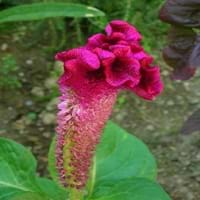Color
Pink, Purple, Red
Orange, Pink, Purple, Red, Yellow
Color Meaning
Pink - Sensitivity and Love, Purple - Elegance and Pride, Red - Courage, Desire and Love
Orange - Satisfaction and Passion, Pink - Sensitivity and Love, Purple - Elegance and Pride, Red - Courage, Desire and Love, Yellow - Happiness and Friendship
Line
Not Available
Not Available
Silhouette
Not Available
Not Available
Blossom Texture
Not Available
Not Available
Form
Not Available
Not Available
Sunlight
Full Sun
Full Sun, Part Sun
Watering
Diligently
Enough
Essential Fertilizers
Lime stone, Sulphur
Nitrogen
Common Pests and Diseases
List of Pests
Unknown, Unknown, Unknown
Aphids, Mites, Nematodes, Slugs, Snails, Spider Mites
List of Diseases
Unknown
Gray Molds, Root Rot, Stem Rot
Bloom Time
All Summer Season, Fall Season, Spring Season
Spring Season
Origin
Africa, Asia, Europe, North America
China, Greece, Iran, Persia, Siberia, Turkey, Ukraine
Interesting Facts of
- The Rose comes in various colors, although a "black rose " is not literally black but a dark red.
- A single rose suggests utmost devotion while two rose entwined together says "Marry me".
- Tulip is the national flower of Turkey and Afghanistan and its name is originated from Turkish word 'Turbin'.
- On Valentine's Day Tulip is the second most popular flower to send after roses.
Lifespan
Annuals - complete its full life cycle in one growing season
Annuals - complete its full life cycle in one growing season, Perennials - a plant that lives for three or more years
Uses
Not Available
Not Available
Health Benefits
Unknown, Unknown, Unknown, Unknown, Unknown, Unknown
Best remedy for Cough & Cold, Reduces risk of cancer, Used for sinus pain, hay fever and headache
Medicinal Uses
Unknown, Unknown
Have diuretic properties, It has anti-septic properties
Culinary Uses
Unknown, Unknown, Unknown, Unknown, Unknown, Unknown
NA
Cosmetic Uses
Best for Healing, Unknown, Unknown, Unknown, Used after facial and cleansing, Unknown, Unknown, Unknown
Best for Dry sensitive skin, Used in creams, hand lotions and in essential oils, Used in Perfumes
Occasional Uses
Anniversary, Valentine's Day, Wedding
Father's Day, Friendship Day, Mother's Day, Wedding
Scientific Name
Amaranthus
Tulipa
Sub kingdom
Tracheobionta
Tracheobionta
Super Division
Spermatophyte
Spermatophyte
Division
Magnoliophyta
Magnoliophyta
Order
Caryophyllales
Liliales
Class
Magnoliopsida
Liliopsida
Family
Amaranthaceae
Liliaceae
Sub Family
Amaranthoideae
Lilioideae
Genus
Not Available
Not Available
Number of Species
Not Available
Not Available
More about Amaranth and Tulip Facts and color
You must be curious to know more about Amaranth and Tulip facts and color. flowers.comparespecies.com will let you know all the Interesting Facts about Amaranth and Tulip. Amaranth comes in Pink, Purple, Red colors whereas Tulip flowers are with Orange, Pink, Purple, Red, Yellow colors. Other Amaranth and Tulip facts will definitely amuse you.
Amaranth and Tulip growing conditions
Absolute growing condition is the only key to keep plants in good health and in good shape. Let’s learn about essential Amaranth and Tulip growing conditions. Amaranth requires Full Sun and Diligently watering with 5.50 of Loamy soil. Tulip needs Full Sun, Part Sun and Enough watering with 6.00 of Sandy soil. Get other Amaranth and Tulip facts in the sections below.
Amaranth and Tulip Facts
Want to know about Amaranth and Tulip facts? Get all the Amaranth and Tulip facts here.
Amaranth and Tulip Classification
After knowing about various Amaranth and Tulip facts, let's study their classification. Based on genetic and physical features, Amaranth and Tulip classification starts with knowing their scientific name. The scientific name of Amaranth and Tulip is Amaranthus and Tulipa respectively. Amaranth belongs to Amaranthaceae family whereas Tulip falls under Liliaceae family. Also check out Flowers by Color so as to plant colorful aroma in the garden.





